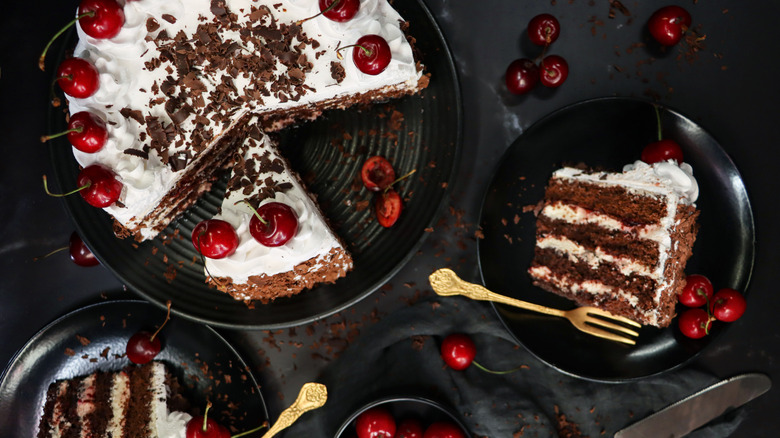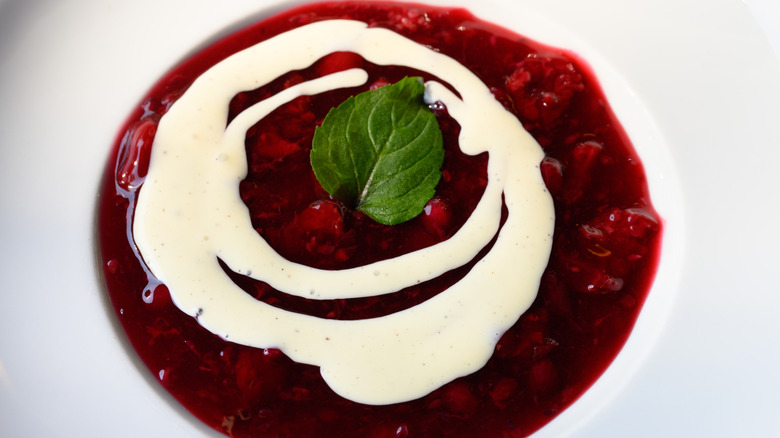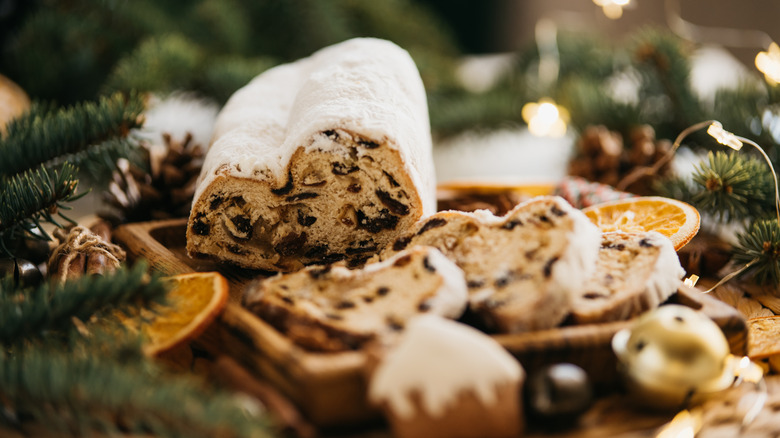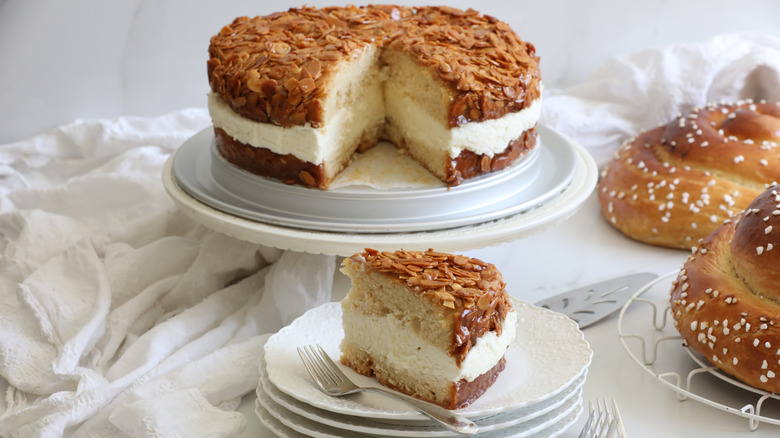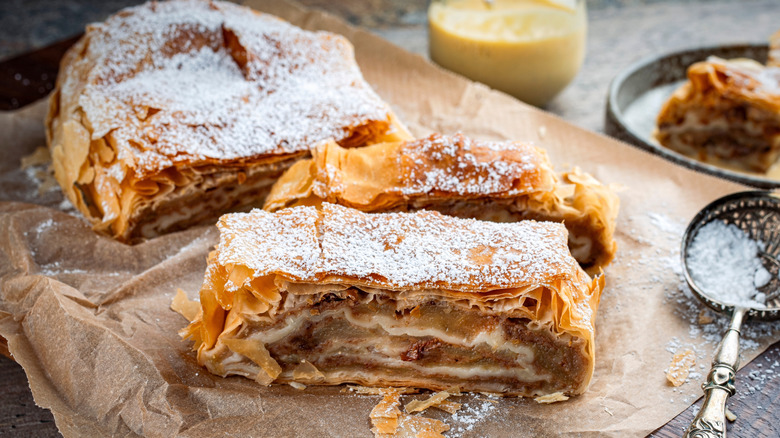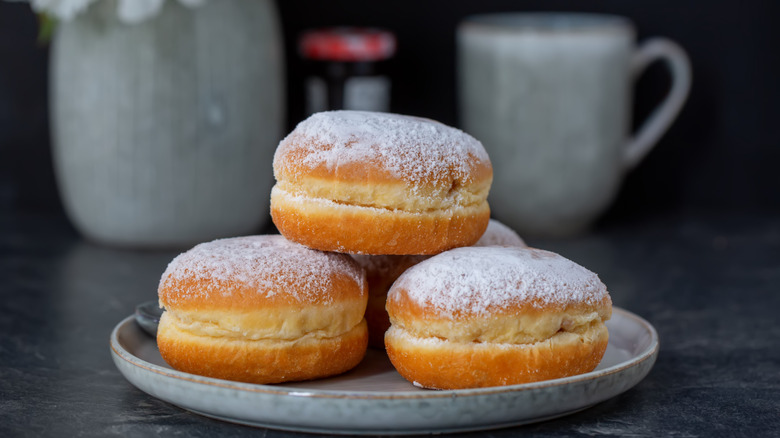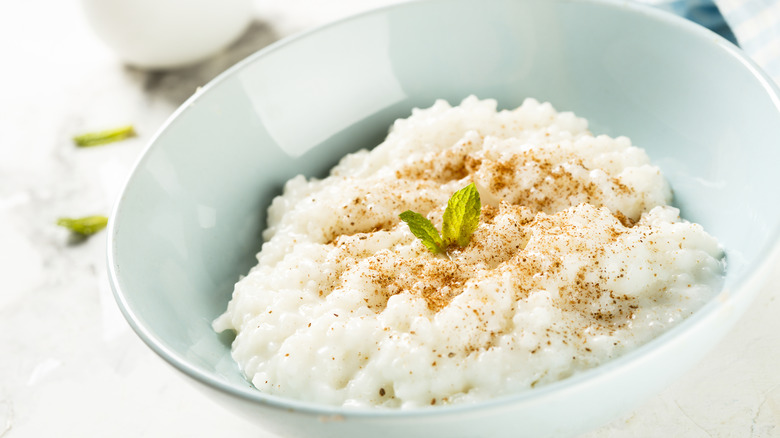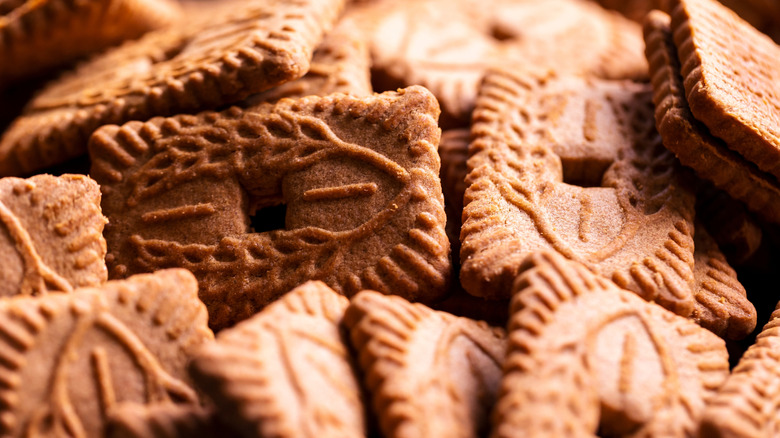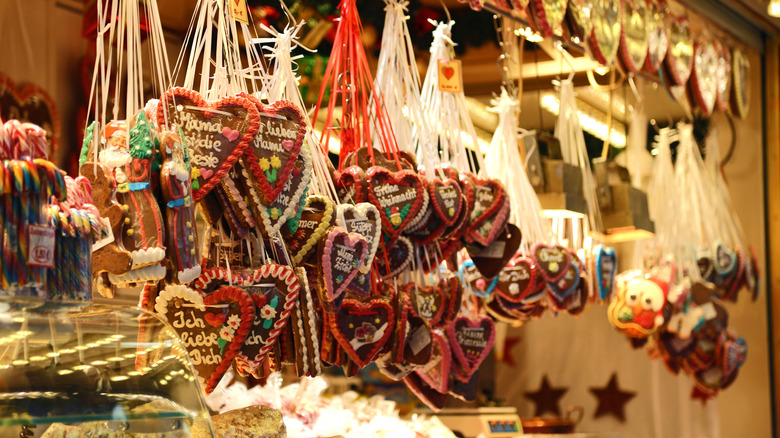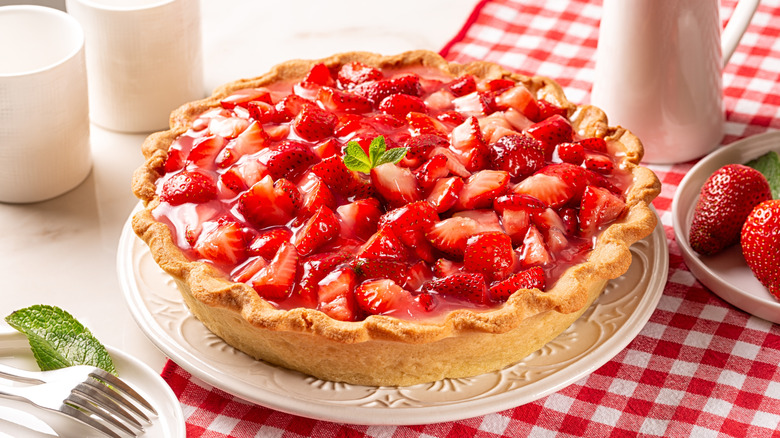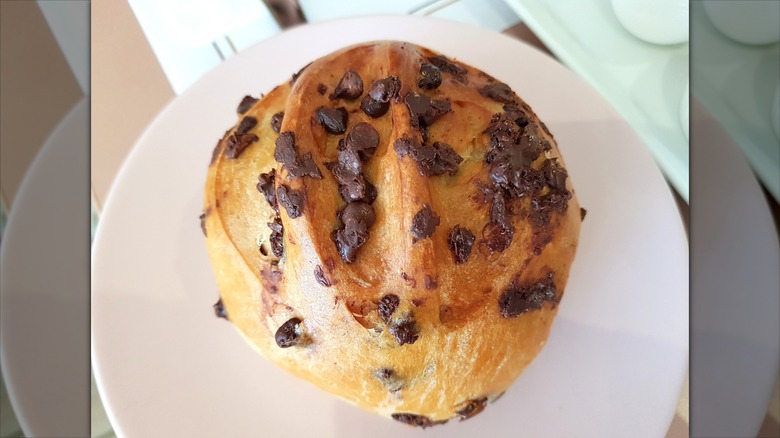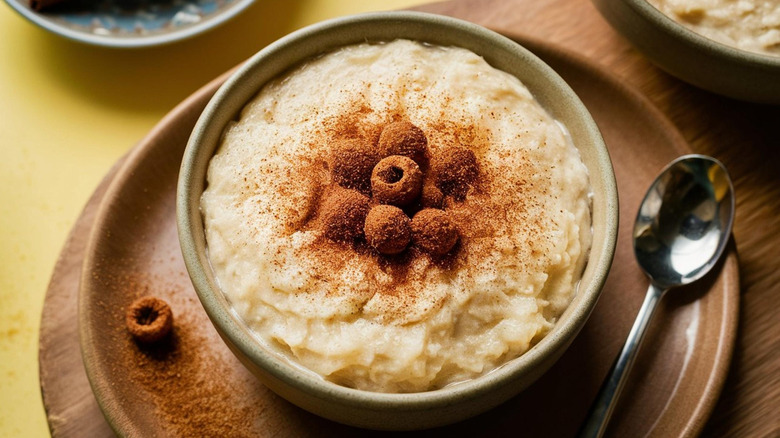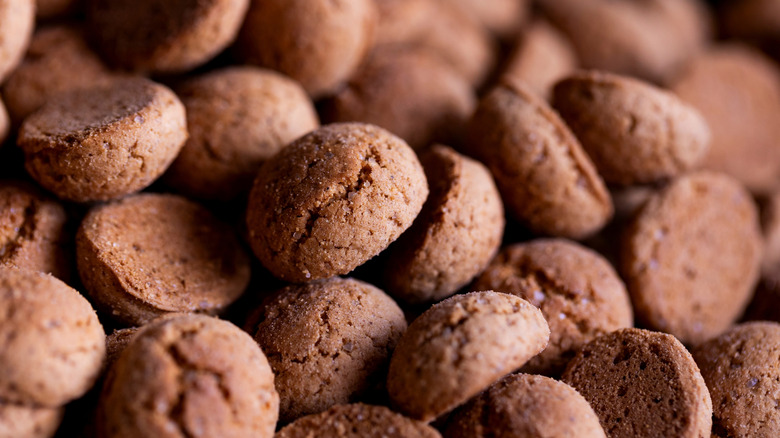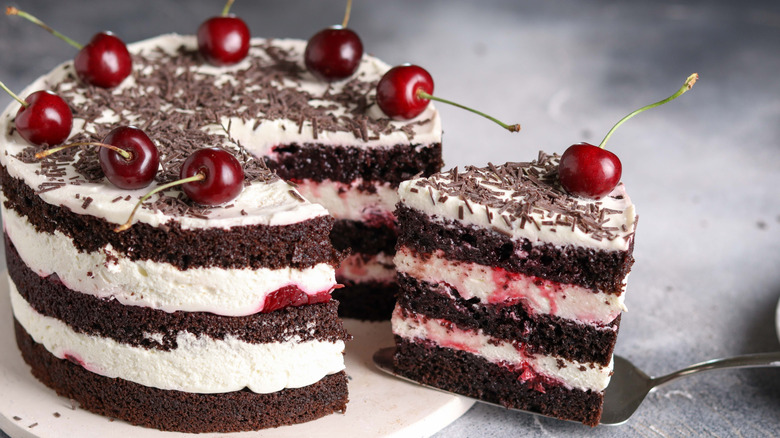13 German Desserts You Need To Try Before You Die
When you think about food from Germany, you might picture sauerkraut and bratwurst, but the country is also serious about its sweet offerings. There are some amazing German desserts and sweet treats, from simple puddings to richly spiced cookies, and so much more in between. German desserts aren't all that common outside of their native region, so many people haven't sampled any — and those who have usually only know the most common options.
To learn more about the best German desserts, we spoke to three experts about their must-try favorites. We spoke to two food bloggers with a German heritage, and a professional chef and culinary school instructor who comes from Austria but did some of his training in Germany. They gave us the lowdown on the German desserts they love the most.
These are the 13 German desserts you need to try before you die. They range from chocolatey to fruity to spiced, so there's something for everyone. If you're not well-acquainted with sweet foods from this part of the world, now's the time to learn more.
1. Rote grütze
Rote grütze is a red berry dessert that's common in Germany, particularly in the warmer months when these fruits are in season. It's so popular, in fact, that there's even a German McFlurry with rote grütze sauce — that's one of the many McDonald's desserts you won't get to try in the U.S.
It's a favorite of German food blogger and recipe developer Anja Eckert of Our Gabled Home. "This fresh summer berry dessert is endlessly flexible and great on its own, with vanilla pudding, vanilla ice cream, or with cake," she tells us. "It is made with mostly red berries such as strawberries, cherries, raspberries, and redcurrants that are dressed with a hot red juice with cornstarch which solidifies as it cools," Eckert adds.
It's a bit like a berry compote, but it's usually eaten as a pudding in its own right, topped with a little vanilla custard. That said, you can use it as a sauce or topping for granola, pancakes, or anywhere else you might use compote. It differs from similar recipes thanks to its sweet and sour profile — the tart flavor comes from the sour cherries usually used in this dish. It also contains cinnamon, a spice commonly added to German desserts. While it's usually not something you'll find sold in the U.S., it's easy to make at home. It simply involves simmering the ingredients and mixing in some cornstarch, so it's simple to pull off, even if you don't usually bake.
2. Stollen
If you've ever wondered what stollen is, now's the time to find out. Although it's sometimes described as a bread, it's sweet and definitely falls into dessert territory. "Stollen is a Christmas bread, originally from Dresden," says Chef Jürgen David, director of pastry research and development at the Institute of Culinary Education.
It has a long history, as the first ever version of this treat dates back to the 1300s, although it has changed somewhat since then. Today, stollen is a sweet yeasted bread, enriched with milk and butter. "It's packed with dried and candied fruit, maybe even marzipan," David tells us. True Dresden stollen is made to strict rules — and doesn't contain marzipan, but versions popular in the U.S. often do.
According to David, "it's a must-have for Christmas morning." Of course, you can eat it at other times of the year, but it's usually only available in shops and bakeries around the festive season, so if you want it in July, you'll have to make it yourself. Those hoping that someone else will make it for them won't have to go as far as Germany to try it. Stollen is fairly popular in America, so you can find it in supermarkets, as well as in some cafés and bakeries.
3. Bienenstich
Bienenstich is also known as bee sting cake. That might not sound appealing, but let us assure you that it tastes incredible — and you won't end up with a sting. This German delicacy is the perfect blend of sweet and creamy without being over the top. And we wish it was more readily available in other parts of the world.
"German bee sting cake is one of my all-time favorite cakes," says recipe developer Carissa Erzen of Humbly Homemade, who grew up in Germany. "The batter is made with yeast, so it's less sweet and has a delicious depth of flavor," she notes. This is unusual in modern cakes, which usually have baking soda as a raising agent. We love the firmer texture it gets from being risen with yeast.
But the fillings and toppings are just as notable. "It's filled with smooth pastry cream and topped with crunchy toasted honey almonds, so it has so many flavors and textures rolled into each perfect bite," Erzen adds. Bienenstich is a favorite of Jürgen David, as well, who's also a fan of its honey-almond topping and custard filling. "It is as delightful as it is sinful," he remarks.
It's popular enough in Germany that it sometimes finds its way into Aldi during German week. The Aldi version isn't going to be the best available, though. If you have a local German bakery, they might have it for you to try.
4. Apfelstrudel
Costco apple strudel pastries might be great, but they can't complete with a real German apfelstrudel. This dessert involves apples and pastry, usually with an array of spices. You've probably had American versions, but it's just not the same.
"I love making my great-grandma's recipe for authentic apple strudel, because it's comprised of alternating layers of paper-thin apple slices and a homemade pastry dough called Strudelteig," says food blogger Carissa Erzen. This isn't the kind of strudel you get in the freezer aisle of a supermarket — it's so much better.
"Most apple strudels in the U.S. are made by heaping all the filling into one pile," Erzen explains. "But the time-intensive layers create the perfect blend of soft, spiced apples and buttery, crispy crust in each bite." German apple strudel usually contains cinnamon, which is a spice that often shows up in recipes from this region. It brings a warmth and fragrance to the dish that makes it even more delicious. It may also contain raisins. It's best served warm with custard or ice cream.
5. Berliner
Doughnuts are different all over the world, and a Berliner is a German example. According to chef Jürgen David, a "Berliner is the German version of a donut, usually filled with jam and dusted with powdered sugar." This might sound quite familiar, but it is different from a standard jelly doughnut.
What makes a Berliner different is that it's enriched with milk, butter, and eggs — plus an extra egg yolk, so the dough is richly flavorful. The jelly inside isn't your standard strawberry, either. Currant and rosehip jelly are both traditional options. These doughnuts can also be filled with vanilla custard or chocolate mousse — great news if you don't like jelly.
Berliners are most common in North and West Germany. Despite the name, it might seem like you can't find them in Berlin. However, this is just because they go by a different name in their eponymous city. They're usually called pfannekuchen in Berlin, while in some parts of Germany's South, they're known as krapfen. These doughnuts are traditionally eaten at Karneval, which is six weeks before Easter, at the start of Lent. However, you can still find them at other times of year.
6. Milchreis
Milchreis is a German type of rice pudding. If you're looking for something traditional and homey, it's a perfect choice. It's not the sort of dish you'll commonly find on restaurant menus in Germany, it's more like something a person's oma might make at home.
German milchreis is a fairly simple stovetop rice pudding, usually just made with vanilla to flavor it. However, it may have more ingredients added to it when it's served. "We love to eat it warm sprinkled with sugar and cinnamon," says Our Gabled Home's Anja Eckert. "Some people love it with dried and stewed fruit," she adds. It's often a personal choice or family preference. Some households might go heavy on the spices when serving, while others prefer it more plain.
Want to try this traditional German dish? Then, you'll have to make it at home, unless you're heading to Germany any time soon. And, even then, it's not going to be easy to find out and about, as it's considered old-fashioned by many and is more likely to be eaten at home. Luckily, it's simple to cook yourself. "This one is so easy to make with short grain rice and milk, cooked until the rice is tender," Eckert explains. There are plenty of milchreis recipes online that you can try. Of course, you can buy rice pudding in the U.S., but it's subtly different to the German version.
7. Spekulatius
"Spekulatius is a fancy, thin, and spicy cookie with the coolest imprints and sliced almonds on the back," Jürgen David of the Institute of Culinary education tells us. If you haven't heard of these cookies, you probably at least know about their cousin from the Netherlands, speculaas. Yes, those are the same cookies from the iconic Biscoff cookie butter.
Spekulatius are spiced cookies that people love to eat around Christmas time. They're often made with a special cookie press that gives them a shape or design, such as windmills, animals, or people in traditional dress. The special thing about spekulatius is the mix of spices they contain. You'll taste cinnamon, nutmeg, cloves, ginger, and cardamom in these cookies. Sometimes, bakers even add almonds for extra flavor and texture. They're usually thinner than speculaas cookies and use a slightly different spice blend.
In Germany, they're traditionally eaten and given as gifts on December 6, which is St. Nicholas Day. Children might even receive packets in their shoes to celebrate — a bit like how gifts are given in stockings on Christmas day. While you can buy similar biscuits year-round, you might find real spekulatius in German supermarket Aldi near Christmas. However, they're even better from a bakery or baked at home.
8. Lebkuchen herzen
If you're looking for an authentic taste of Germany, you can't go wrong with lebkuchen herzen — or gingerbread hearts. There are two main types of these — large iced cookies and smaller chocolate-covered versions.
The large ones are a favorite of recipe developer Carissa Erzen. "Lebkuchen Herzen are gingerbread heart cookies that can be found throughout Germany at Oktoberfest and Christmas markets, so they remind me of festive parties," she tells us. She likes that they're full of flavor from ingredients like molasses, honey, brown sugar, and melted butter — not to mention ginger and other spices. These large versions are usually iced with text. "Ever since I was a kid, I've been obsessed with the words iced on each cookie like "Prost" (cheers) and "Ich Liebe Dich" (I love you)," says Erzen.
The smaller ones consist of a soft gingerbread in a heart shape, stuffed with an apricot fruit filling, and coated in chocolate. They're a common Christmas treat, so you can find them in stores all over Germany around the festive season. Lebkuchen is the general term for this kind of gingerbread and you can find it in other shapes, not just hearts. In the U.S., you can even find these types of cookies in Aldi. They might not always be labeled as lebkuchen, but the flavor is the same.
9. Erdbeerkuchen
Erdbeerkuchen is a kind of strawberry vanilla cake. It looks like something between a pie and a cake because the traditional pan used has a fluted edge like a pie dish and leaves a slight dip in the top to hold the strawberries in place. That said, you can use a regular cake pan to make it, if you want to avoid buying new equipment.
"This is basically a denser sponge cake that is then layered with strawberries and a red glaze," Anja Eckert informs us. But if strawberries aren't your thing, don't worry. "You can also use other fruit such as plums, raspberries, gooseberries or any of your favorite fruit," she adds. This gives you the opportunity to use whatever fruit is in season and at its best. At its most simple, it uses just fruit as the topping, but you can choose to add a glaze or a layer of lemon cream cheese filling that goes between the cake and the fruit.
When it comes to serving, "I love it just with some very slightly whipped cream," Eckert says. However, you could top it with ice cream, custard, or even just eat it as is. It's a little bit like a German version of a strawberry shortcake, which might help you decide what accompaniment you'd like best.
10. Schokobrötchen
Chocolate doesn't feature as heavily in German desserts as it does in the U.S. but this doesn't mean chocolatey treats don't exist. If you're looking for a popular sweet dish featuring chocolate, enter schokobrötchen. "Schokobrötchen are made from an enriched dough that's stuffed with sweet chocolate," explains Carissa Erzen.
In Germany, they're a common sight in bakeries, but you can also simply buy them from the store. "Growing up in Germany, my family would buy packaged Schokobrötchen from the store, and I'd eat one after school everyday," Erzen says. "I always looked forward to that soft bread and sweet chocolate filling as my afternoon treat."
For anyone in North America who wants to try them, you'll probably have to make them yourself, unless you happen to have a local German bakery. Luckily, they aren't too hard to bake if you're used to making yeasted doughs. The base is a simple enriched bread dough with milk and butter, plus some vanilla for flavor. After making the dough, you incorporate the chocolate and then separate it into individual balls and leave them to rise. After a quick trip into the oven they're ready to eat. If you enjoy them still slightly warm, the chocolate inside will be gooey and delicious.
11. Griesbrei
Made using semolina, this pudding is the kind of thing your grandparents might have eaten — but it's surprisingly tasty. Although griesbrei is technically a dessert, it isn't overly sweet and is sometimes eaten for breakfast. It certainly makes a change from toast and granola.
It's a favorite of Anja Eckert. She says it's "similar to milchreis, only that this is based on a specific type of semolina." However, she notes that it's cooked in milk like milchreis is. These kinds of milk pudding occupy a similar space but taste quite different. It has nuttier, earthier notes than rice pudding and a different texture that's slightly less silky than rice pudding. "You can serve it sprinkled with sugar and cinnamon, red berry pudding, dried/stewed fruit, or apple sauce," Eckert notes.
Like milchreis, it isn't a particularly trendy dessert so you're unlikely to find it on menus, even in Germany. After all, you wouldn't expect to find semolina pudding on a menu in the U.S., either. So, this is one you'll have to make yourself. The good news is, there are plenty of recipes online for this dish. Making it yourself means you can decide exactly how to flavor it and top it, too.
12. Pfeffernüsse
Pfeffernüsse is a German Christmas cookie that's deliciously spiced. These treats are in the gingerbread family but they contain more than just ginger. They're usually spiced with cinnamon, cardamom, pepper, cloves, and nutmeg, too. Plus, they may contain some anise extract.
"Every December when I lived in Germany, I'd look forward to receiving pfeffernüsse from Saint Nicholas, which is a German holiday on December 6th," says Carissa Erzen. "I'd savor the soft, spiced cookies throughout the whole season." What does Erzen love about them? Well, "they're packed with warm spices (often including white pepper), sweetened with honey and brown sugar, and topped with a simple glaze." Yum.
In Germany, they're available all over the place around the festive season. Although you'll find the tastiest ones in bakeries, you can also buy packaged versions in practically every supermarket. They're far less common in the U.S. However, they're also traditionally eaten at Christmas within Mennonite communities. So, if you live somewhere with a sizable Mennonite community, you might be able to buy them closer to home.
13. Black Forest cake
"Black Forest cake is a whipped cream and cherry-forward chocolate cake," Jürgen David tells us. If you're familiar with just one German dessert, it's probably this one. Also known as Black Forest gâteau, it was seen as the height of sophistication in the 1970s and 1980s, served at dinner parties and on special occasions. But Google search volume for the cake has doubled in the past decade, so its time certainly isn't over.
It's essentially a chocolate cake with a sour cherry filling and whipped cream between the layers and often on top of the cake. David is a big fan. "It is so good — have it for your coffee break in the afternoon," he says. The sourness of the cherries balances out the syrup and the sweet chocolate cake. And the whipped cream frosting isn't sweet like buttercream is, so it's a bit of a grownup dessert.
Black Forest cake is named after the Black Forest region of Germany. However, it's not necessarily because it's from that region. Some people suggest that it's so-called because its colors mirror those of the traditional dress of the Black Forest, which is black, red, and white. Wherever its name came from, it has a longer history than you might imagine. Some historians believe the first iterations of the cake date back to the 16th century. However, the version that's known today was invented by a pastry chef named Josef Keller.
